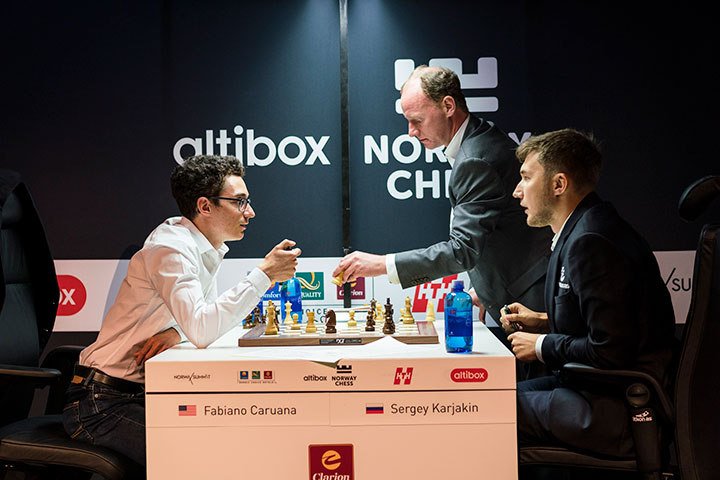Carlsen's lead back to a point for now
It is official now, Ding Liren is out of the tournament. The right decision has been made, it would have been crazy to continue while recovering from surgery. Ding's ascension to Cloud 2800 will have to wait.
Normally, round-robin tournaments are set up for an even number of players. Having an extra rest day when everybody else is playing creates different dynamics. Sometimes, it's welcome when you're coming off a loss, but it can also be a momentum breaker. Of course, we can hardly apply it to our round five situation, unless we're talking about interrupting a nice drawing streak by Wesley So.
Carlsen ½-½ Anand
Carlsen had White today and looked forward to padding up his lead. However, his opponent (none other than Vishy Anand) wasn't in the mood to give Magnus even an inch.
 Williams main teaching method behind this set of two DVDs is to teach you some simple yet effective set ups, without the need to rely on memorising numerous complicated variations.
Williams main teaching method behind this set of two DVDs is to teach you some simple yet effective set ups, without the need to rely on memorising numerous complicated variations.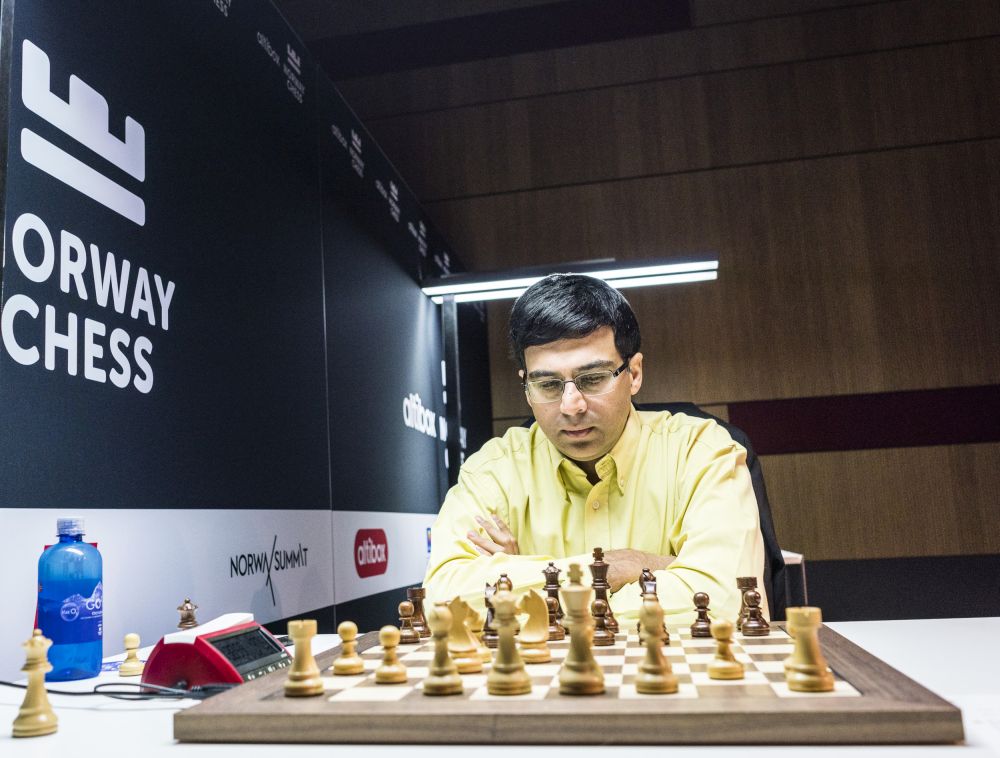
Anand remains on an even keel | Photo: Lennart Ootes
Following this tournament on different chess servers I couldn't help but notice a significant drop off in viewership once Magnus Carlsen leaves the stage. That is understandable, given Carlsen's status as the World Champion and the fact that he's always in the mix fighting to win tournaments.
Some U.S.-based chess sources serve as playgrounds for Nakamura fanboys, the numerous army of which has been equally fueled by Hikaru's all-night bullet marathons and no-holds-barred twitter quips. Every time I stream a live show there always are inquiring minds wanting to know if this one is going to be a Nakamura tournament.
Is it? The first round battle against Ding was an encouraging sight for Hikaru's fans, but he didn't win it, and then more draws came, including a less than inspired effort against Carlsen a round before.
Mamedyarov ½-½ Nakamura
Today it was Mamedyarov-Nakamura. Given the tournament situation in particular — no wins for either player and a full point behind the leader with only four/five games to go — one could hope for a pitched battle. Instead, all we got was a computer-generated dud.
 Rustam Kasimdzhanov, the FIDE World Champion in 2004, has been extremely successful with the Nimzo-Indian with 4.Qc2 with White and with Black. In over 4 hours of video, Rustam Kasimdzhanov explains all the important ideas, strategies and tricks helped by sample games in which the white side is represented, e.g., by Kasparov, Anand, Kramnik and Ivanchuk as well as the author himself.
Rustam Kasimdzhanov, the FIDE World Champion in 2004, has been extremely successful with the Nimzo-Indian with 4.Qc2 with White and with Black. In over 4 hours of video, Rustam Kasimdzhanov explains all the important ideas, strategies and tricks helped by sample games in which the white side is represented, e.g., by Kasparov, Anand, Kramnik and Ivanchuk as well as the author himself.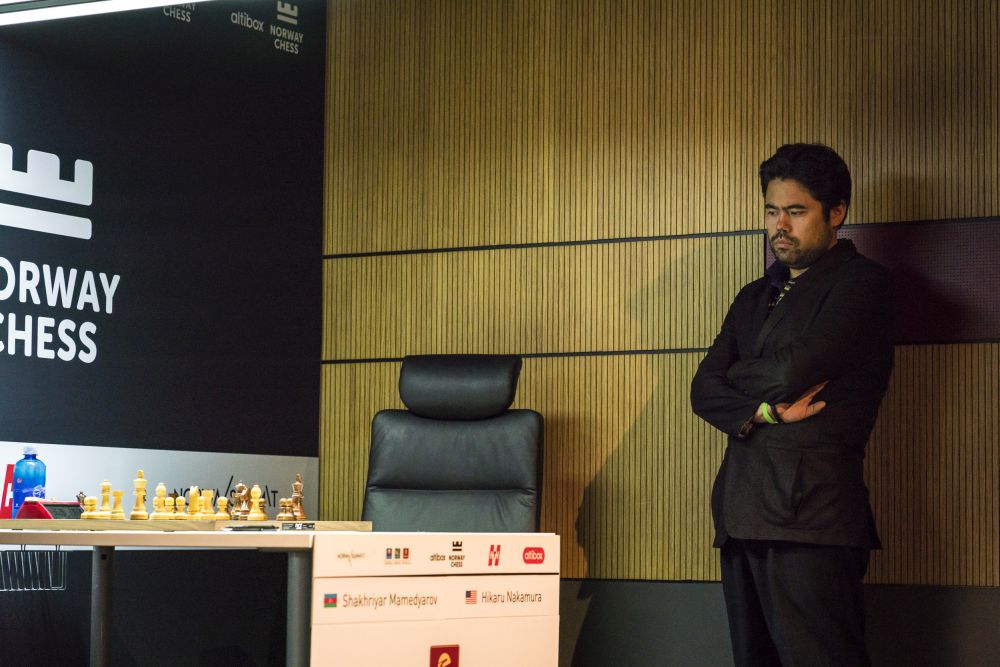
Nakamura takes stock in the Nimzo | Photo: Lennart Ootes
About Mamedyarov: While his result at the Candidates was excellent, and his play was steady, it also signified a departure from Shakh's old swashbuckling days. Is it a “sign of maturity” (often a euphemism for “getting old”)? Is it the responsibility that comes with holding a #3 (formerly even #2) position in World rankings? Or is it the evil influence of Shakh's second, GM Alexey Dreev, who's known for his technical style of play? Whatever it is, personally, I want the old Mamedyarov back!
Vachier-Lagrave ½-½ Aronian
A lot of the same sentiment can be applied to the case of Maxime Vachier-Lagrave. Does it have to be all opening for Maxime?
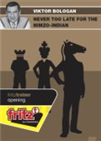 Bologan's way to the Nimzo-Indian was very long and difficult, but now the Moldavian grandmaster recommends the Nimzo-Indian to players of all levels because it’s complex and simple at the same time.
Bologan's way to the Nimzo-Indian was very long and difficult, but now the Moldavian grandmaster recommends the Nimzo-Indian to players of all levels because it’s complex and simple at the same time.He appears to be somewhat dejected when things don't pan out as promised. Today, once again, MVL just couldn't get his game off the ground. Levon Aronian was well prepared, and after 20 moves of play, Aronian was the one who could have gone on with the game, if he was so inclined.
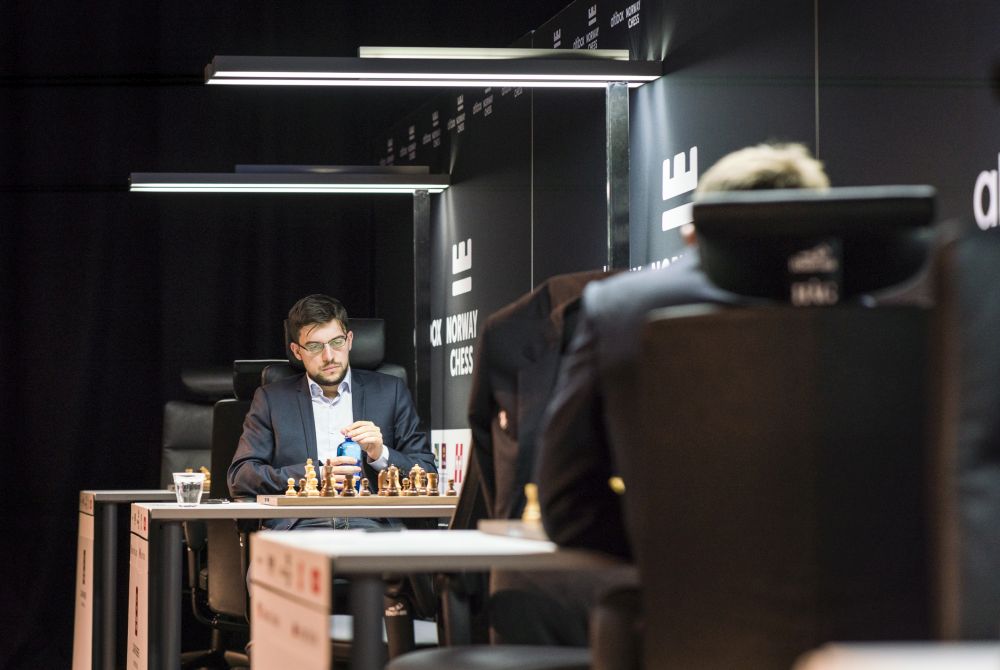
MVL, already under pressure in the opening | Photo: Lennart Ootes
No matter how I try to fluff it in my skimpy notes, I'm not going to deceive the reader. The three games shown above were, how to put it, non-games. Write this off as a wrong guess in preparation (MVL's and Carlsen' games) or lack of proper physical condition (Mamedyarov can still be suffering the consequence of his dental problems), it's all the same to us, spectators.
In a larger event, such as the World Cup or the Olympiad, we can easily find other games to enjoy, but here with only four games being played, it is slim pickings. We lose 75% of the games to the draw bug, and what do we have left?
Caruana 1-0 Karjakin
At least, today we had one decisive result. Fabiano Caruana made it back to 50%, while dropping his opponent, Sergey Karjakin to the same mark.
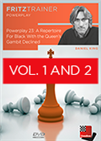 On this DVD, Grandmaster Daniel King offers you a repertoire for Black with the QGD and against the Catalan. The repertoire is demonstrated in 20 stem games, covering all White's major systems.
On this DVD, Grandmaster Daniel King offers you a repertoire for Black with the QGD and against the Catalan. The repertoire is demonstrated in 20 stem games, covering all White's major systems.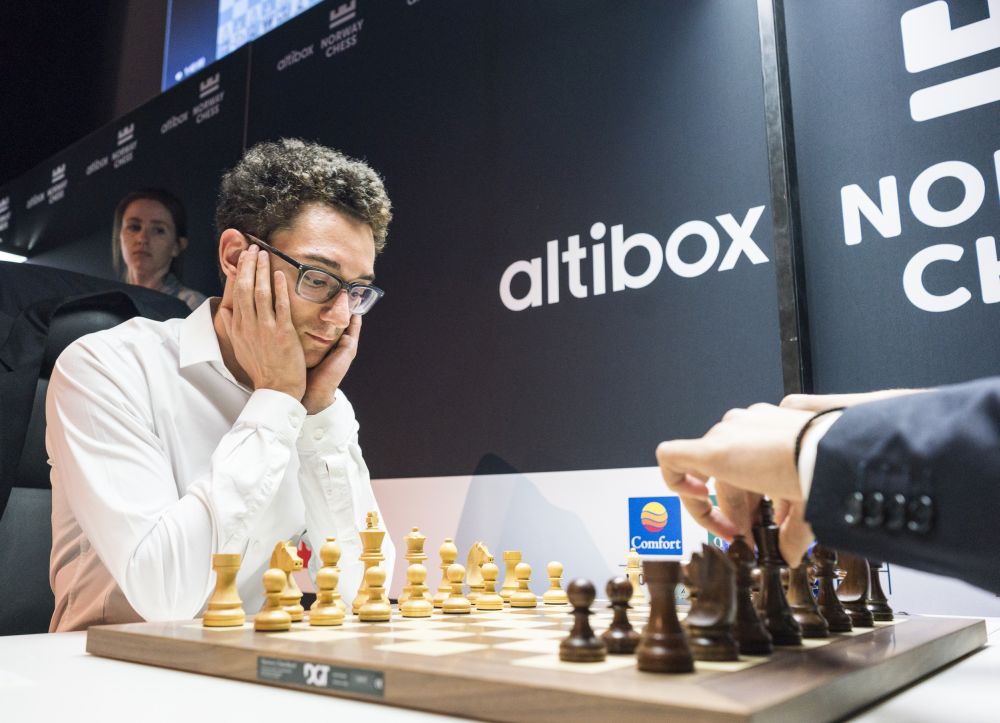
Caruana with a strong game and the only win of the day | Foto: Turnierseite
Replaying this game I can't shake off a feeling that Karjakin is largely responsible for his own demise. It seems he came out to play for a win, perhaps sensing other players' (aside of Carlsen, of course) vulnerability. As much as I admire the spirit, it's a sharp switch from the years of “a draw with Black is always welcome” philosophy, which Sergey always followed. Such shift is possible, but it takes a lot of work, and then again, given the quality of competition there will be setbacks every once in a while.
At the end of the day, Magnus didn't win his game, but gained in tournament position, as the margin of a full point lead has been restored. However, when looking at the Standings after Ding's departure, we must remember that now the players have played an unequal number of games.
Round 5 round-up show
Standings after five rounds
All games rounds 1 to 5
Links
